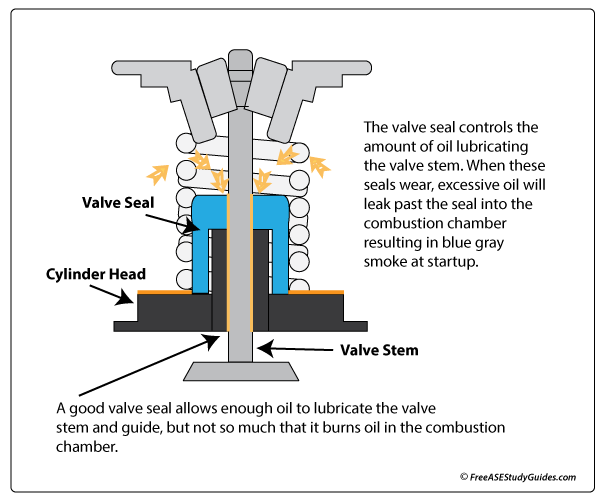Leaking Valve Seals

Leaking valve seals result in blue-gray exhaust. Engine oil is leaking past the valve seals and into the combustion chamber. These seals allow the valves to move up and down while providing a thin oil film for lubrication. Exhaust smoke occurs when too much oil leaks past the seal. The valve stems ride in valve guides; the seal contains and controls the oil used to lubricate the moving stem. Here are three types of seals found today. The most popular of these is the positive valve seal.

Positive valve seals: These seals are rubber or plastic and snap into place in a groove machined into the cylinder head. They sometimes require a special tool or a 10mm socket to install. The intake and exhaust seals can be distinguished by their sizes and colors.
Umbrella valve seals: Umbrella valve seals used to be everywhere on all kinds of engines. These seals are installed after the valve has been inserted into its guide. Polish the valve with crocus cloth and lubricate it with oil or assembly lube before installation.
O-rings: O-rings are installed on the valve stem. They are installed after the valve spring has been compressed and on the third groove down. Lubricate the seal with oil before sliding it over the valve stem. Check the manufacturer's manual for any special procedures.